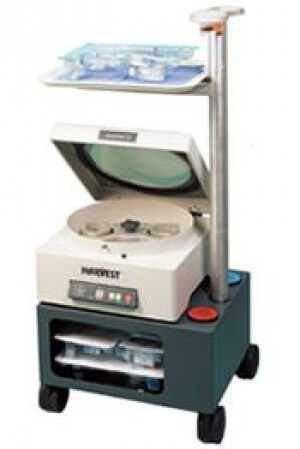The most common forms of heel pain are either mechanical or inflammatory or a combination of the two.
Note that we are talking about pain on the bottom of the heel and not the back. The back of the heel often includes Achilles tendonitis.
Mechanical types of heel pain include:
- Plantar fasciitis
- Heel spur pain
- Thin fat pad, which results in a lack of cushioning
- Tarsal tunnel syndrome or nerve entrapment at the heel
- Calcaneal apophysitis in children (Severs disease)
- Calcaneal stress fracture (heel bone fracture)
- Sciatica or radiculopathy
Inflammatory or systemic causes of heel pain can include:
- Gout
- Rheumatoid arthritis
- Reiter's syndrome and ankylosing spondylitis
- Bursitis on the bottom of the heel between the plantar fat pad and the plantar fascia.
Typically, with either of these conditions there will be edema enlargement adjacent to the plantar fascia or involving the plantar fascia itself. Therefore, every step will be painful. Some of the inflammatory conditions such as gout can cause pain even when no pressure is placed on the foot. Classically, gout causes severe pain at nighttime when there is no weightbearing pressure.
Plantar fasciitis is one of the most common causes of heel pain. Typically, there will be edema and thickening of the fascia at its origin where it attaches at the heel bone. Without any weightbearing pressure and without the calf being utilized, the calf muscle tightens up. Therefore, pain is typically experienced first thing in the morning. This is referred to as post-static pain or stiffness or post static dyskinesia. There are many treatments for plantar fasciitis to help address this pain in the morning.
A thin plantar fat pad (fat pad atrophy) is a common cause of heel pain. With a thin plantar fat pad, a patient is likely walking on the bone itself which means the periosteum, or outer layer of bone, really takes a "beating." After a full day of weightbearing pressure on this area without the anatomical plantar fat pad to cushion and protect the foot, the underlying structures become painful.
Heel bursitis causes heel pain because of its inflammatory component. Bursitis is a fluid filled sac that puts pressure on the structures on the bottom of the heel. This pressure greatly increases with weightbearing pressure, therefore causing pain. Heel bursitis is an example of a condition that really has both inflammatory and mechanical components. This can start out as a "stone bruise" and progress to bursitis.
Tarsal tunnel syndrome is a form of nerve entrapment that can cause heel pain. A smaller medial calcaneal branch off of the posterior tibial nerve medial branch is usually more specific to heel pain.
Stress fractures can cause heel pain. There is often swelling with this condition. It should show up on an x-ray, but may require a CT scan or MRI for diagnosis.
Gout can also cause heel pain. It can occur at various locations in the body but it is very common in the foot, especially the great toe joint. The heel is in other locations and it can occur. Gout involves deposits of uric acid crystals. This is a breakdown product of protein that is normally process through the kidneys. It is usually is displayed as pronounced inflammation, redness and pain, especially at nighttime.
Rheumatoid arthritis can affect the heel, but more often affects the forefoot. This is an autoimmune disease.
Reiter's syndrome can cause heel pain, often at the achilles insertion but it can also target the plantar fascia attachment at the heel. This condition usually involves the eyes and other mucous membranes. Other similar conditions include ankylosing spondylitis and psoriatic arthritis.
Infections and neoplasms also can cause heel pain.
If you are experiencing heel pain, please don't hesitate to contact us.






